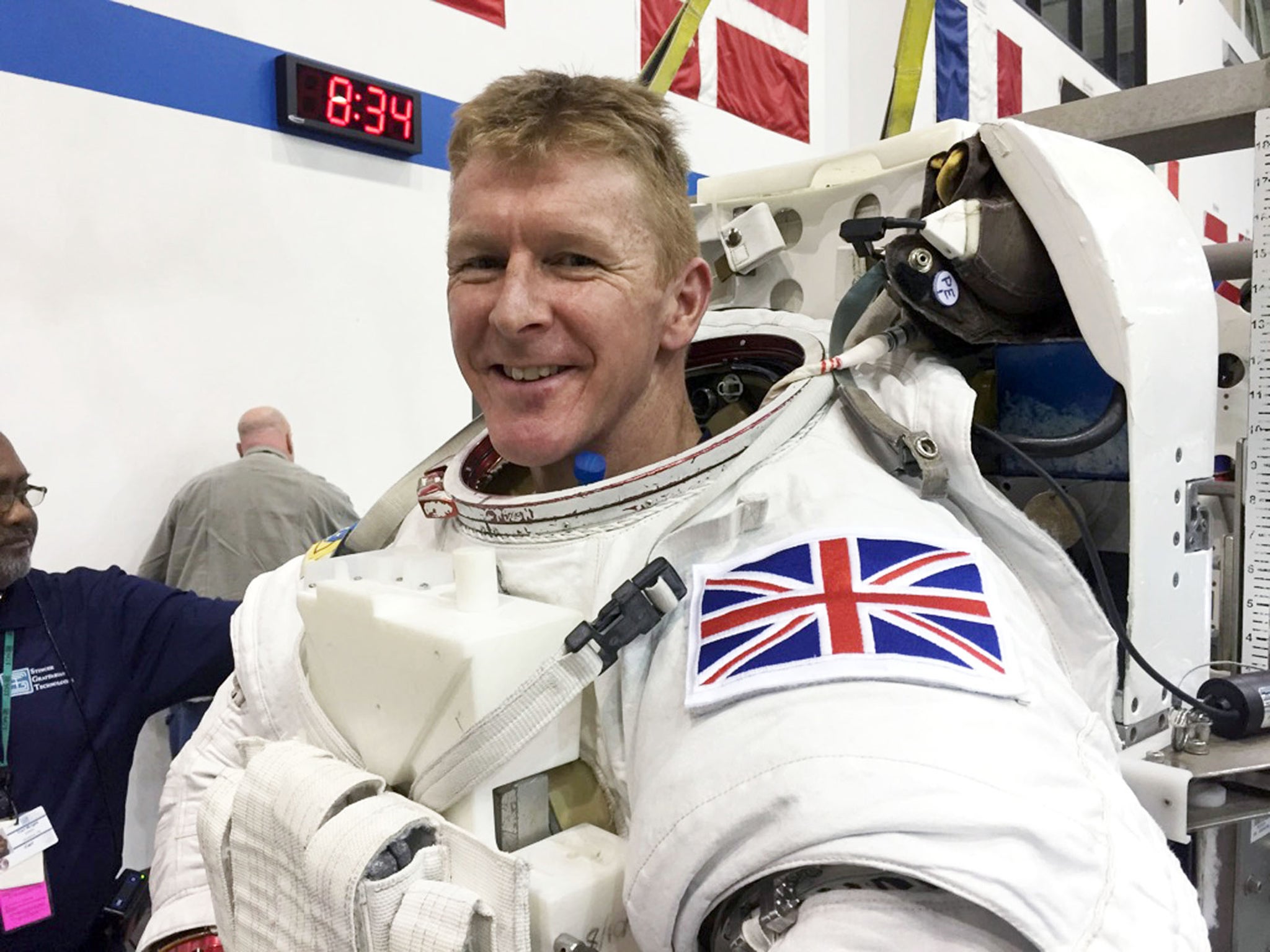Tim Peake goes into space: What will Britain’s first ESA astronaut do during International Space Station visit?
His work will consist of experiments and the testing of technology that could be used in future missions to the moon and to Mars – though there’s a lot of chores to be done, too

Major Tim Peake will be involved in experiments that could shape future missions to Mars and further into our universe, during his time as the first publicly funded Briton in space.
The Briton will become the country’s first ESA astronaut in space when he jets off from Kazakhstan. His mission will see him spend six months on the International Space Station.
And while he is there he will be involved in some of the most important testing for humanity’s future spaceflight. That could directly lead to future missions back to the moon and further in our solar system, such as Mars and beyond.
Major Peake has already said that he would eventually like to be involved in missions to Mars, though the European Space Agency has no plans to send its astronauts there. He might be more lucky with a trip to the moon, which a range of different agencies are hoping to revisit by the 2020s.
The scientific purpose of Major Peake’s time in space will be to conduct experiments and to test out the technology that could eventually be used for more manned missions to elsewhere in our solar system.
In all, Major Peake will take part in 265 experiments. Simply being on the space station is also a kind of experiment, since it will allow scientists to look at the effects of microgravity on his body – a process that will continue long after he’s back on the Earth in six months.
But the biggest part of the work of an astronaut living on the ISS is to ensure that everything keeps ticking over there. The space station needs near-constant maintenance, and while lots of it can be directed from the ground, much of the work needs to be done by the resident astronauts.
In pictures: Tim Peake goes into space
Show all 12That upkeep consists of ensuring that the space station’s life support, power and communications systems keep running. Doing that work might include strapping into a suit and going on a space walk, stepping off the station.
The mission is called Principia, after Isaac Newton’s famous Principia Mathematica, and its logo has an apple to match. The name signals the mission’s huge scientific ambitions – Newton’s book is perhaps the greatest scientific book ever published, and laid out some of the most important parts of Newtonian physics – so Major Peake has a lot to live up to.
Away from the more obvious experiments, Major Peake will also run the entire 26.2-mile London Marathon in April. For that he’ll use a treadmill onboard the space station.
One of the more conventional experiments that Major Peake will take with him for instance is a UK-designed test that will be used to check astronauts for the problems that can arise from increased brain pressure.
The kit, known as a cerebral and cochlear fluid pressure (CCFP) analyser, tests for the visual problems and sickness that can be caused if astronauts are hit by problems in space. Many astronauts have suffered from “visual disturbances” in their time in space, and they don’t go away when they’re back on the ground, and the kit can test for the increased pressure that is thought to be responsible.
But it will also have applications on the Earth. The same kit could be rolled out across the NHS in the future, and will be used to check for head injuries and infections without needing surgery or other major procedures.
Much of the experiments and technology that is being carried up to the ISS by Major Peake and his fellow astronauts has the same kinds of applications. Many pieces of equipment are sent into space for testing there – but can also be used in various ways by people on Earth.
But the work will also be used for future space missions. Scientists are keen to use the remaining time on the space station to learn more about how the human body functions when it is in space – in preparation for spending much more time there in future.
As private companies look to join the space missions, and as technology gets good enough to support much longer flights, people are looking once more at returning to the moon and taking steps towards manned missions to Mars.
The International Space Station is due to be closed down in 2024. By then, other kinds of missions are expected to take its place.
Subscribe to Independent Premium to bookmark this article
Want to bookmark your favourite articles and stories to read or reference later? Start your Independent Premium subscription today.

Join our commenting forum
Join thought-provoking conversations, follow other Independent readers and see their replies